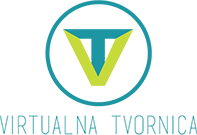Internet search optimization is one of the most cost-effective marketing strategies that enhances a website’s online visibility through special strategies. By increasing organic traffic, businesses can significantly improve their online visibility with little financial outlay. It is the key to connecting your brand to your audience searching for your products and services. It is important to know how searchers find wanted information and tailor a digital strategy to match their queries.
Internet search optimization, or SEO technique, isn’t just about implementing keywords into content. It involves creating a serious strategy that combines content quality, technical enhancements, and UX solutions.
What is Internet search optimization?
SEO, or search engine optimization, is an internet marketing technique that ensures that your website’s digital presence thrives in the competitive digital world, whether it’s an e-commerce platform or a corporate website. By integrating research, analytics, and optimization, SEO can drive measurable results for businesses.
Easily said, search engines help find users what they’re looking for online. If SEO strategies are implemented with quality and detail, your website will rank higher on a search engine result page, also called SERP. Overall, if users click on your website’s page by only searching through engines, you will attract more organic traffic.
Factors That Shape Better Search Results
Internet search optimization depends on multiple factors working together to improve rankings, drive organic traffic, and improve user experience (UX). These factors can be broadly categorized into On-site SEO and Technical SEO.
On-Site SEO for Creating Relevant Content
On-site SEO primarily focuses on the visible elements of your website, ensuring the content aligns with user intent and encourages engagement.
The key factors that contribute to better search results are:
Keyword Intent
Keyword intent, also known as search intent or just intent, is essential in Internet search optimization as it is why a user enters a specific term into a search engine. Therefore, the content you provide must be the most relevant to the user’s query if you want to rank higher on Google. This means your website must be enriched with content that closely aligns with the intent of your target audience.
You can easily generate content that will address your audience’s searches by determining keyword intent during the gap analysis and content planning stages. It draws in better-quality traffic, which eventually raises conversion and user engagement.
Keyword and Content Relevance
After researching keyword intent, the next step is keyword and content optimization, ensuring your content aligns with user intent—a key element of internet search optimization. This alignment improves relevance, engagement, and rankings. Analyzing competitor content can reveal opportunities or gaps in meeting audience needs, helping you refine your digital approach.
Keep in mind not to overload the content with keywords in an unnatural way, also called keyword stuffing. Ignoring a keyword’s context and intent can also lead to irrelevant material that doesn’t meet the user’s expectations. Furthermore, using highly competitive keywords that are too general may draw unwanted results. Long-tail keywords, or longer phrases that users search for, can be used to further draw in a more niche market with less competition.
Regularly update your content to keep it relevant in time. This helps you maintain a competitive advantage by ensuring that it remains in line with search trends, algorithm changes, etc.
Title and Meta Tags
Title and meta tags are crucial parts of HTML code used to inform search engines and users about a website’s content. They help search engines understand the purpose of your page and affect whether users click on your link in the search engine results page (SERP). This is crucial for better internet search optimization.
Technical SEO for Strong Foundation
Optimizing a website’s backend architecture and technological components to make sure search engines can efficiently scan, index, and comprehend your material is known as technical SEO.
Responsive Design
Quality responsive design boosts SEO and UX experience, as it aligns with Google’s mobile-first indexing for a higher organic position. Studies have shown that mobile users have outnumbered computer users so making a responsive, mobile-first website is highly beneficial. Additionally, a responsive website is created to be faster, easy to use, and visually attractive. You can read more about responsive design here.
Site Structure and Navigation
Foundational elements such as site structure and navigation are a significant part of technical SEO. A logical and intuitive site structure not only helps users find information effortlessly but also ensures search engines can effectively crawl and index your website, leading to better rankings, visibility, and overall internet search optimization.
Effective navigation includes clear menus, breadcrumbs, and internal linking. An ideal site structure is simple yet effective, allowing users to get the information they came for within only three clicks.
Optimizing URLs
Alongside internal linking, optimizing URL structure ensures that it accurately represents the website’s category structure, providing context about the page’s purpose and relevance. Proper URL management, such as using canonical tags, prevents duplicate content problems and ensures the right version of a page is indexed.
Backlinks and Domain Authority
Domain authority is a very important metric in SEO as it tells us how strong a website’s backlink profile is and measures its online growth. Backlinks, or links from other websites leading to yours, play a key role in building a strong domain authority. It considers factors such as the total number of links pointing to a domain and the sole quality of the linking domains. The higher the domain authority score is, there are more ranking opportunities.
Don’t Forget About Off-Site SEO
Besides on-site and technical SEO, off-site SEO is a crucial part of Internet search optimization, focusing on strategies beyond your website to build authority, visibility, and credibility. The main goal is to show search engines that your website is a legitimate source of information. This is primarily achieved through mentioned backlink building, but also by working with a social marketing agency to increase your online presence through social media.
The Final Step
Internet search optimization is a dynamic process and a mixture of strategies that must work together to maximize your online presence. By continuous analysis and updating these elements, your website can stay ahead of trends and become the main competitor.

So, if you are ready to make the most out of your digital presence and potential, your final step is to reach out to Virtual Factory and we’ll help you turn these strategies into remarkable results.








